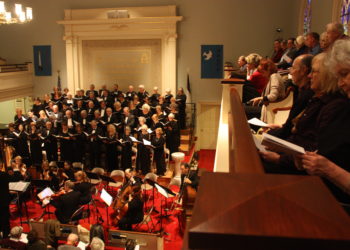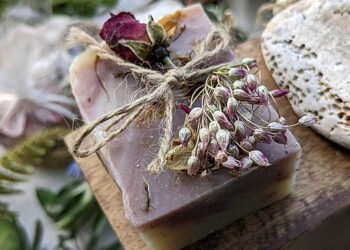It’s no doubt that the East End has seen a resurgence of the local oyster industry recently. If the bivalve mollusk has piqued your interest, don’t miss the next Tom Twomey Series lecture at the East Hampton Library on Saturday, September 28.
Dubbed All About Oysters, the evening will feature a Panel Discussion with John “Barley” Dunne, Director, East Hampton Shellfish Hatchery; and Adam Younes, owner of Promised Land Mariculture Co.; as well as a post panel reception with complimentary craft beer from Montauk Brewing Company.
We recently caught up with Dunne about the amazing benefits of oysters, the best time to harvest, and more.
What do you attribute the resurgence of the local oyster industry to?
JBD: Partly the availability of lease of farm area is one, and the other is just demand, there’s a huge demand for the product. It’s really been on the rise for the last few years, production has been doubling annually in some places. So, I’d say a combination of that demand and the availability of lease areas due to the Suffolk County Aquaculture Lease Program. It’s allowed a lot of people to get into the industry.
 |
|
John “Barley” Dunne. (Courtesy Photo) |
What are the benefits of having oysters in our waters?
JBD: It’s pretty significant. You’ll hear this statistic over and over again, but one adult oyster can filter anywhere from say 30 to 50 gallons of water a day. And not only that, but the gear that the oysters are grown in provides tons of habitat for other things like grass shrimp and nursery fish. It’s also really important in sequestering nitrogen, which is kind of water quality enemy number one lately. Just due to septic systems and fertilizers, those are the two prime suspects. As opposed to other forms of agriculture, there’s no inputs. As opposed to something like salmon where the salmon need to be fed, oysters just feed on what’s available in the water on the ambient food supply. It’s really sustainable in that regard.
What does your role as East Hampton Shellfish Hatchery Director entail?
JBD: Everything from the municipal administration to working in the field along with the crew, which is by far my preference. We have a full time staff of four, including me, so we’re pretty well vertically integrated. We do all of our own growing of food at the hatchery level and all our spawning and rearing of the larvae, all the way up to this time of year, which is when we really start to seed that product. We have several million two inch oysters, which is a really good size to get to because a lot of those oysters, once we seed them will survive. It’s kind of a predation refuge size. We have about five to six million clams that are going to be seeded soon – those are much smaller because clams grow much slower, and a few hundred thousand scallops that we do every year.
So, just keeping everything in order, keeping all the equipment, all the crew outfitted and giving them the direction that they need, although they pretty much run themselves.
When is oyster harvesting season?
JBD: All year-round. That’s the beauty of it. But, the best time, I mean as far as flavor goes, the best time is really say right around now through the winter, because during the fall they store some sugars and fatten up for the wintertime. Once the water temperature drops to about 50 degrees, they stop feeding. They go kind of dormant, if you will. And then once the water warms up again to 50 come April, give or take, they’ll start feeding again. At that time, they’re getting ready to spawn, so it’s a really great time to eat them. But, we can eat them year-round. The flavor tends to diminish a little bit in the summertime because they’ve spawned out and they’ve lost some of their flavor.
You’re also involved with Conscience Point Shellfish Company. Could you speak a bit about your work with the nonprofit?
JBD: I’ve kind of worked with them as an advisor. They’re a small nonprofit and they grow oysters to market size and sell them to some local restaurants. They have a small really kind of what we call pocket hatchery and we’re trying to get that going. Last year we grew some oysters and clams in there from larvae discards. That worked pretty well. So, I advise them on all that stuff. There’s a few paid people that work there on a part time basis, and a whole bunch of volunteers and we also partner with one of the other oyster farms in the neighborhood called West Robins Oyster Company and they help us out with some of the field work. It’s working out pretty well. There’s always too much to do, but it works out.
Now East Hampton has a volunteer individual oyster farming program. For someone who’s interested in joining, what advice would you offer?
JBD: The beauty of it is that the people that are interested are usually interested for the right reasons. They want to get out on the water, they want to grow some of their own oysters, they’re interested in water quality, and the effects of oyster growing on water quality. Just get ready to grow some really beautiful oysters and be astonished by how quickly oysters grow and how tasty they are once they get there because I’ve been doing this for 20 years and every year just the rate of growth oysters show is amazing. They grow so fast and they’re really a rewarding animal to grow.
What will the Tom Twomey Series lecture cover?
JBD: It’s going to talk about the East Coast oyster and how it’s only one species, which is one of the messages we try to get out. A lot of people don’t realize it’s only one species and all those names that you hear are really just kind of trademark names. And try to also cover one of the other myths, which I kind of led into before, and that is the whole months with an r myth. We’ll discuss that and why that came about and how it’s not necessarily an issue anymore. I think one of the issues we’ll talk about is that old myth about oysters as an aphrodisiac and hopefully we’ll get some good questions from the audience.
Is there anything else that you would like to add?
JBD: I’m psyched that the oyster is so popular, but let’s not forget that there are other things out there that we’re growing and eating and that are valuable – like the clam and the scallop and hopefully in the future kelp. It’s a great resurgence. We’ve got support from all gamuts of society, all the way up to the governor. It’s a great time to be doing it. Hopefully it’ll remain in the spotlight for a while. It’s a really rewarding industry.
Admission to the Tom Twomey Series is free, but RSVPing in advance is requested. The lecture begins at 6 p.m.
East Hampton Library is located at 159 Main Street in East Hampton. For more information, visit tomtwomeyseries.org.












